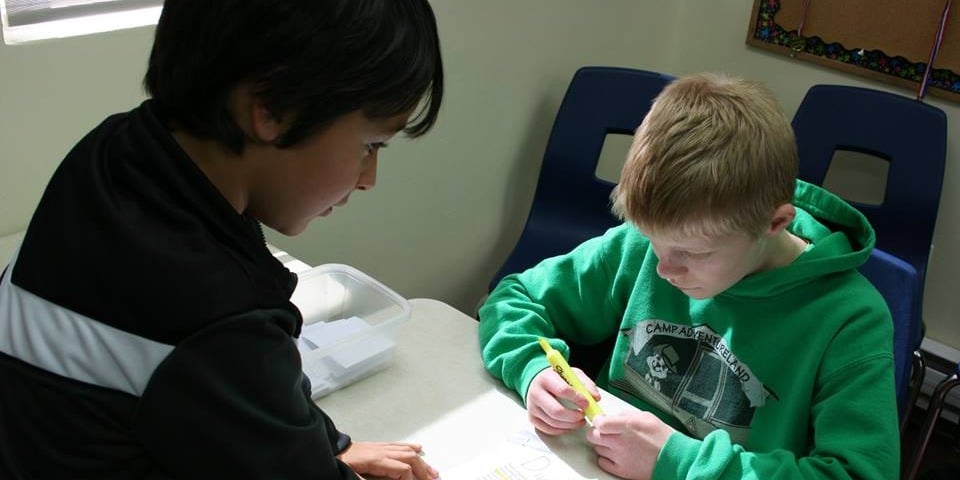Our brain is highly specialized and highly unique. In fact, our cognitive profiles are as unique as our fingerprints, due to the range of cognitive capacities that we have across a range of cognitive processes.
This unique cognitive makeup really shapes every experience that we have as individuals.
Most importantly is that we can change that experience. We can change our cognitive profiles through neuroplastic applications, using cognitive exercises which strengthen our cognitive functions and enhance our performance and improve our quality of life.
All of humanity can benefit from neuroplastic approaches, in the workplace, at home, in health, in wellness, in recovery and many more places, to deeply improve our quality of life and our society as a whole.
In our previous webinar, “Adding the Brain to the Education Equation” the third in a five-part series on How Neuroplasticity Can Enrich Our Lives, we explore how neuroplastic applications can help reform traditional education systems.
But how exactly can neuroplasticity be integrated into education?. In this blog, we explore the role the brain plays in academic learning and that success can be enhanced by introducing cognitive programming.
If you would like to explore the concept we discuss in this blog in more depth, please watch the fourth webinar of our five part free webinar series - How We Learn: The Brain’s Role in Academics.
Why the classroom is the perfect setting for cognitive programming
The classroom is a terrific spot to build cognitive programming into daily activities. Intuitively we know that our brain is central to our learning process and the acquisition of learning skills.
That’s why, in this blog, we are going to examine an aspect of those skills, often called foundational skills or core literacies, and look at the implications and applications of a cognitive approach to understanding learning in the classroom.
Let’s look at mathematics, for example
The majority of people believe they are either a “math person” or not a “math person”. The reality is, there is no such thing as a math person - at the very least there doesn’t have to be. Science has shown us enough about mathematics and learning for us to know that anyone in the world can be a “math person”.
Our brains are hardwired with ‘math’ functions. Think of all the different math circuits that would have had to be active when early humans were figuring out how to build shelter or how many berries needed to last them through winter.
Even today, think about how early in our development we consider math principles - how an infant can understand when something is taken away from them (subtraction), well before they set foot in a math classroom.
Our brains are built to be mathematical. That’s not to say math can be easily acquired, in fact many people around the world struggle with math - and that can extend far beyond the classroom.
Speaking about math, Daniel Ansari, neuroscientist at the University of Western Ontario, said: “It’s about multiple regions working in concert. The better they work in concert, the more essentially they speak to each other, the stronger the gain in numerical abilities.”
When we narrow down all math problems to their simplest form, the brain is being asked two things:
- To calculate
- To understand
There are two very important cognitive functions at play here.
1 - Quantification sense
Our quantification sense (our mind’s calculator) is the brain area that allows us to have number sense and have application of numbers across many domains, including math facts, calculating change, estimating time for scheduling, budgeting, and remembering phone numbers.
It’s how we become comfortable with numbers in life, and how we develop financial literacy. This quantification sense function is fundamental in mathematics.
2 - Symbol relations
Before we can use our mind’s calculator, we have to figure out what we are calculating. The function that does that is our symbol relations, which is the network that is active when we have to connect two or more ideas together to understand something.
Example: One half is the same as five-tenths, even though the digits are completely different.
We are constantly being asked in mathematics to make sense of something, to understand or grasp an idea. Symbol relations is the brain area that allows us to grasp math at a deeply conceptual level.
Math, requires a range of cognitive functions all working in concert
It’s not just these two cognitive functions that are important in math, however. Just like in any academic learning, math is an outcome of the interplay between many of our cognitive functions.
There are cognitive functions that are critical to everything we do.
- Motor symbol sequencing
- Symbol recognition
- Symbol relations
- Lexical memory
- Spatial reasoning
- Memory for information
- Kinesthetic perception
- Mechanical reasoning
- Predicative speech
- Kinesthetic speech
- Abstract reasoning
- Broca’s speech pronunciation
- Non-verbal thinking
- Primary motor
- Auditory speech discrimination
- Narrow visual span
- Quantification sense
- Symbolic thinking
- Object recognition
Cognitive programming in education can improve results and wellbeing
Across our cognitive profiles, we operate at different levels within each of these cognitive functions. We all have different strengths and weaknesses across all of the above listed cognitive functions, and that impacts our learning abilities.
Yet through neuroplasticity and cognitive programming, our brains can both stay healthy and active but they can also be improved. Cognitive functions that are weak, can be strengthened over time through cognitive training. And cognitive functions that are average can also be enhanced to hone performance.
When we bring the brain into the classroom, schools are able to not only realize academic improvements in word recognition, arithmetic, comprehension, writing, spelling and reading speed, but also enhance the wellbeing of their students.
The more we understand the distinct role of each cognitive function in learning tasks, the more we can use this knowledge to better understand the student’s experience and even to shape our own expectations differently.
Are you interested in learning more about how the principles of neuroplasticity can be used in learning? Get in touch with Arrowsmith today. Our team of cognitive enhancement specialists would love to help.
Tags:
Neuroplasticity
January 6, 2023




